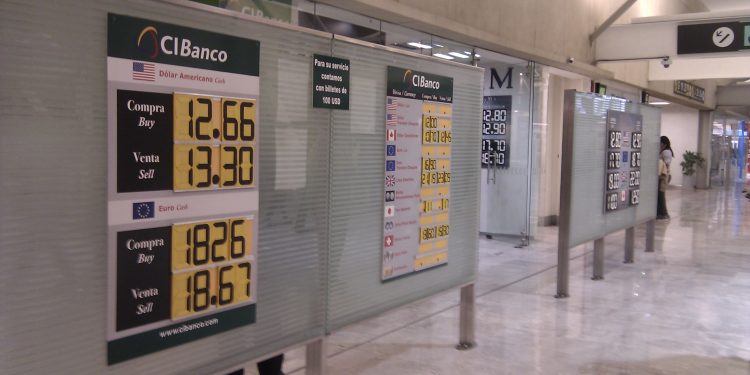Mexico’s peso has been surprisingly stable against the dollar in the past year or so, more surprising even given that markets have been fairly volatile for fear that the U.S. Fed could start raising interest rates at any time.
One thing that people often wonder is where the exchange rate will be a year or two from now. There is no shortage of projections — the Bank of Mexico publishes a survey of analysts every month which includes the average estimate of more than 30 investment banks and brokerage houses.
Of course if it were possible to know with any certainty what the rate will be three, six, or twelve months down the road, the right business to be in would be foreign exchange, not forecasting.
Those who follow the forecasts regularly will also notice that the estimates tend to change with the movements in the ‘spot’ market (present exchange rate) in any given month. Quite frequently a bad month for the peso will result in a higher estimated rate (more pesos to the dollar) for the end of the year, and vice-versa.
It’s most likely that the models which are used to forecast the rate include a number of financial variables that move with the exchange rate or affect it, such as interest rates and inflation.
There are a number of ways for forecasting rates and, as Investopedia points out, no one method is really much better than another.
The Bank of Mexico’s currency page includes a host of current and historical exchange rate data. As the graph shows, since the beginning of last year, the peso has been mostly around 13 to the U.S. dollar, sometimes just below or slightly above.
So far in 2014, the peso has traded above 13 to the dollar, although projections are that it will end the year at 12.90 and get even stronger to 12.70 or 12.80 by the end of 2015. The reasons for this optimism are mostly the expectation that the economy will grow more than the 1.1% seen last year, and that political reforms made in the energy and other industries will start to attract greater amounts of foreign investment, making the peso gain as investors bring their foreign currency and exchange it for pesos. The projections probably also take into account things like an end to the Fed’s bond buying, and even the probability that U.S. interest rates will start to rise in 2015.
Surprises are what usually cause exchange rates to deviate significantly from projections; examples include a failure in economic growth, a sudden jump in inflation, an unexpectedly large deficit in the balance of payments. So far Mexico isn’t showing signs of any of these happening, although economic growth hasn’t been that hot thus far. And of course, if they could be seen coming, they wouldn’t really be surprises.
See Also: Money in Mexico | Cost of Living in Mexico
Mexico in your inbox
Our free newsletter about Mexico brings you a monthly round-up of recently published stories and opportunities, as well as gems from our archives.

